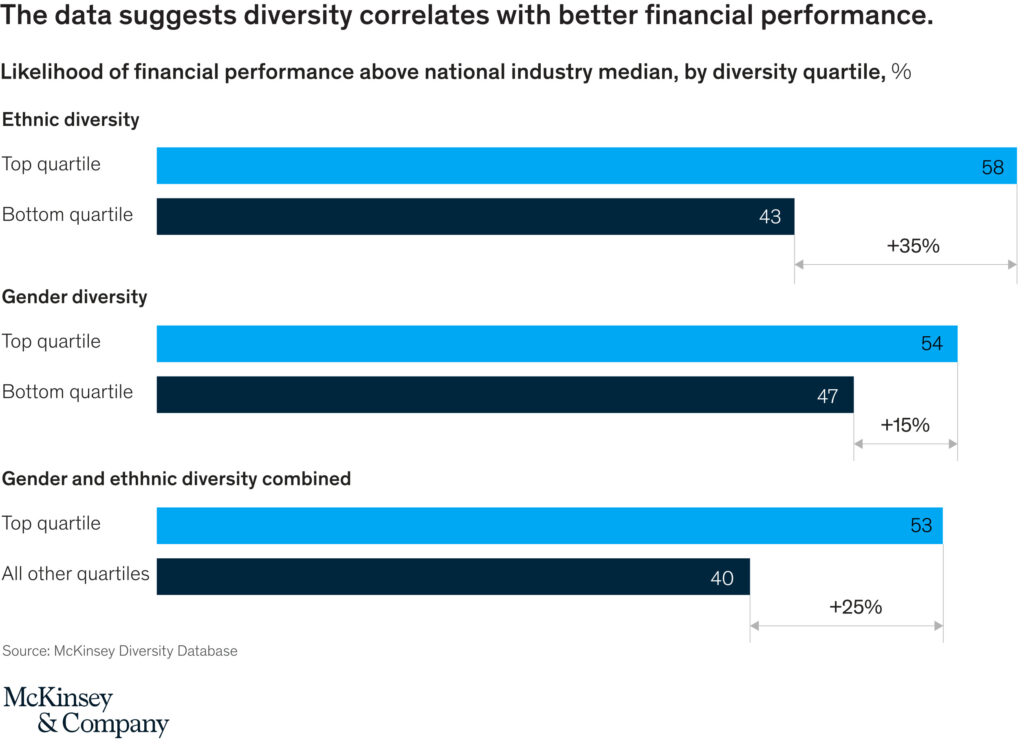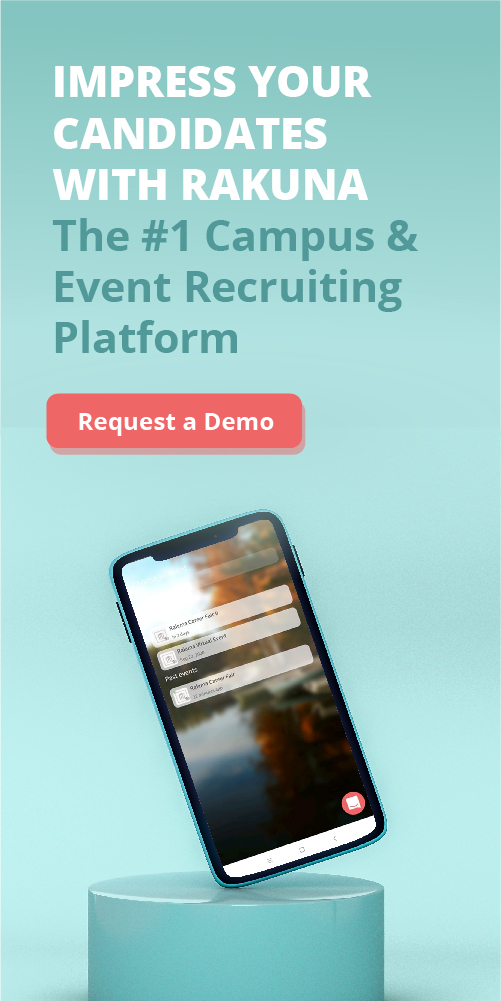Generating awareness and attracting diverse talent are among the top challenges for campus recruiters today. How can your organization better connect with, market to, and recruit minority students and graduates? The answer is multifaceted, but it always starts with developing a well-planned internal and external strategy that centers on diversity and recruitment.
In today’s competitive landscape, prioritizing diversity and recruitment is not just a moral imperative—it’s a business one. Research from McKinsey’s research highlights that diverse teams consistently outperform their peers, underscoring the value of effective diversity recruitment practices (McKinsey: Diversity Wins).
Whether you’re launching or rebooting your diversity recruiting programs, it’s essential to implement tried-and-true tactics that go beyond quotas. Focus on creating a recruitment process that values distinct perspectives and life experiences while ensuring that every qualified candidate is given a fair opportunity.
In this guide, we’ll walk you through 16 proven strategies to build a successful diversity and recruitment program, helping you connect with underrepresented talent and enrich your candidate pipeline for long-term success.
What is Diversity and Inclusion Recruitment?

Diversity and Inclusion Recruitment (DIR) is more than just a buzzword—it’s a strategic approach that ensures every highly qualified candidate is given a fair opportunity to contribute, regardless of their background. This approach involves fostering an inclusive hiring process that actively welcomes and values a broad spectrum of identities, including race, gender identity, abilities, veteran status, age, neurodiversity, and much more.
Broadening the Concept of Diversity
Diversity isn’t limited to traditional categories like “women” or “people of color.” True diversity embraces varied cultural backgrounds, socioeconomic experiences, education paths, and different ways of thinking. Instead of simply labeling individuals as “diverse,” recruitment strategies should focus on appreciating the unique perspectives and skills that each candidate brings to the table. This nuanced approach enriches the overall talent pool and promotes innovation within the organization.
Beyond Quotas: A Quality-Driven Approach
Inclusion and Diversity Recruitment is not about fulfilling quotas or hiring solely based on protected characteristics. Rather, it’s about creating a recruitment process where all candidates are evaluated based on their distinct perspectives, life experiences, and expertise. This approach not only complies with legal standards such as those set by the U.S. Equal Employment Opportunity Commission (EEOC) but also builds a workforce that drives better business outcomes.
Enhancing Business Outcomes
Organizations that integrate effective DIR strategies tend to see a myriad of benefits, including higher employee engagement, increased creativity, and improved decision-making. By focusing on structured, bias-free hiring practices—such as inclusive job descriptions, standardized interview procedures, and collaborative decision-making—companies create a more dynamic and innovative workplace culture.
Expert Insights & Resources
For a deeper dive into the benefits of diverse teams and how a quality inclusion strategy drives innovation, check out:
💡 Forbes on Diversity and Inclusion in Recruitment
💡 McKinsey & Company’s research on the business impact of diverse teams.
In essence, Inclusion and Diversity Recruitment is about enriching your organization with varied perspectives and skill sets. It’s a holistic approach that goes beyond numbers to build teams that are not only legally compliant but also strategically positioned to excel in today’s competitive landscape.
Why Workforce Diversity Remains Essential
The conversation around diversity, equity, and inclusion (DEI) in hiring has shifted dramatically. While research continues to support the business benefits of diverse teams, ranging from increased innovation to improved financial performance, some companies are rolling back their DEI initiatives due to economic uncertainty and shifting priorities.
At the same time, AI-driven hiring tools have become more prevalent, raising concerns about algorithmic bias and the unintended consequences of automated decision-making. Meanwhile, workforce trends in the U.S. show a mix of aggressive hiring in tech and healthcare alongside layoffs in industries such as finance and media, further complicating DEI efforts.
Despite these challenges, McKinsey’s latest research reaffirms that diversity remains a competitive advantage. Their study, Why Diversity Matters, analyzed 366 public companies across a range of industries in Canada, Latin America, the United Kingdom, and the United States:
-
Companies in the top quartile for racial and ethnic diversity are 35% more likely to outperform their industry peers financially.
-
Gender-diverse companies are 15% more likely to achieve above-average financial returns.
-
Organizations with low diversity across gender, race, and ethnicity tend to underperform, demonstrating that homogenous teams miss out on key market insights and creative problem-solving.
Additionally, diversity leads to:
✅ Faster problem-solving and increased innovation due to a wider range of perspectives.
✅ Stronger employee confidence and engagement, fostering an inclusive workplace culture.
✅ Improved recruitment outcomes, as diverse workplaces attract top-tier talent from broader networks.
The DEI Rollback: What It Means for Recruitment
Despite these proven advantages, some major corporations—including MLB, Tesla, and JPMorgan Chase—are scaling back their DEI commitments in 2025. The reasons range from political pressure to budget constraints in a post-pandemic economy marked by fluctuating hiring trends and widespread layoffs. The rise of AI in recruitment has further complicated the landscape, as companies seek to balance efficiency with fairness in hiring.
For recruiters, this presents both challenges and opportunities:
-
Candidates—especially Gen Z and Millennials—expect inclusive workplaces. Companies that abandon DEI initiatives risk losing top talent.
-
AI-driven hiring must be carefully designed to prevent algorithmic biases that may unintentionally reduce workforce diversity.
-
A strong employer brand matters more than ever. Organizations that genuinely invest in DEI will stand out in an increasingly skeptical job market.
Rather hear it from an expert? Check out TED Speaker – Rocío Lorenzo on why diversity makes your team more innovative!
Enhance Diversity Recruiting Strategy in Sourcing
Recent data reveals that the gender wage gap in the United States has widened for the first time in two decades. In 2023, women working full-time earned approximately 85% of what their male counterparts earned, according to PEW Research Center. This marks the first significant widening of the gap since 2003.
The push for equitable hiring practices has never been more critical, especially as wage disparities persist. Despite ongoing discussions about pay equity, gaps like these remain a significant hurdle in achieving true workplace diversity.
A key step toward bridging these gaps? Expanding sourcing strategies to ensure underrepresented candidates have fair access to career opportunities. One of the most effective ways to do this is by leveraging virtual career fairs.
Explore Diversity-Focused Virtual Job Fairs

Virtual career fairs have revolutionized recruitment, offering a cost-effective, scalable solution for reaching diverse talent pools. These online job expos allow recruiters to connect with historically underrepresented groups—including veterans, women, neurodivergent individuals, and people with disabilities—without geographic constraints.
Below is an expanded list of notable DEI-focused career fairs
- Emerging Tech: Advancing Inclusion in the Digital Age
Location: Virtual
Hosted by PowerToFly, this virtual job fair bridges tech professionals with companies committed to fostering diversity in the digital realm. Attendees can engage with recruiters and hiring managers from top firms, all from the comfort of their homes. - Diversity and Inclusion Career and Graduate School Fair
Location: Virtual
Organized by Columbia University’s School of Professional Studies, this nationwide virtual fair connects job seekers with employers and graduate schools dedicated to DEI principles across various fields. - DE&I Virtual Career Fair
Location: Virtual
Facilitated by the Midwest Association of Colleges and Employers (MWACE), this virtual fair invites students and employers to discuss DEI initiatives, promoting open conversations about diversity in the workplace. - Bright Network Diversity, Equity, Inclusion & Belonging
Location: Convene Bishopsgate, London
This event offers attendees the opportunity to connect with inclusive employers like EY and Lloyds Banking Group, participate in skill-building workshops, and explore various career paths. - OPEN Foundation’s Career Fair
Location: Madison College Goodman Campus, Wisconsin
Aimed at LGBTQ+ professionals and allies, this fair connects job seekers with employers committed to diversity, accessibility, equity, and inclusion in the workplace. - Equity & Inclusion Career & Internship Fair
Location: Varsity Hall, Union South, University of Wisconsin–Madison
This fair provides a platform for employers to engage with diverse undergraduate and graduate students seeking internships and full-time positions across various majors. - CareerEco
Location: Virtual
CareerEco is a virtual recruiting platform for job seekers, prospective graduate students, academic institutions, and employers. Their Bender Virtual Career Fair connects employers and job seekers with disabilities online, with over 1,000 registrants from all over the U.S. in the past. - Getting Hired
Location: Virtual
Getting Hired is dedicated to creating employment opportunities for job seekers with disabilities. They host traditional and virtual job fairs to connect inclusive employers with diverse candidates, focusing on accessibility and equal opportunity hiring. - Veteran Recruiting
Location: Virtual
Veteran Recruiting is a global leader in virtual recruitment events for the military community. Their past events have helped more than 120,000 veterans find meaningful employment, with participation from major corporations such as Accenture, Apple, and more. - Diversity in Ed
Location: Virtual
Diversity in Ed is a multinational publication and teacher recruitment resource center. They’ve partnered with Vfairs to host virtual job expos promoting diversity and inclusion for both candidates and employers.
By participating in or hosting career fairs tailored to diverse student groups, your organization can access a rich talent pool and contribute to building a more inclusive workforce.
Recruit Where Diversity Thrives

Incorporating diversity and inclusion elements into your recruitment processes is vital. Many universities have student groups that represent minority or underprivileged communities. When strategizing your campus recruitment, include schools with diverse student bodies that represent underrepresented students.
According to NACE, the most common sources for diverse recruiting among employers are Historically Black Colleges and Universities (HBCUs) and Hispanic Serving Institutions (HSIs). Building strategic partnerships with schools that primarily serve minority populations can significantly boost your diversity recruiting ROI.
Consider these top colleges and universities from U.S News’ Campus Ethnic Diversity Index when recruiting underrepresented students:
- Andrews University – Berrien Springs, MI
- University of San Francisco – San Francisco, CA
- Johns Hopkins University – Baltimore, MD
- Stanford University – Stanford, CA
- University of Hawaii at Hilo – Hilo, HI
- University of Maryland, Baltimore County – Baltimore, MD
- George Mason University – Fairfax, VA
- New Jersey Institute of Technology – Newark, NJ
- New York University – New York, NY
- Rutgers University–Newark – Newark, NJ
- University of California, Los Angeles – Los Angeles, CA
If you’re based in the United Kingdom, explore top-ranking universities based on the Hotcourses Diversity Index:
- Kingston University
- University of London
- Middlesex University
- UCL (University College London)
- Open University
These universities can be excellent sources of diverse talent for your recruitment efforts.
Collaborate with Multicultural Associations and Student Groups
Diversity and recruitment are facing a unique crossroads—while some companies are scaling back DEI efforts, the organizations that continue to invest in diversity partnerships are reaping undeniable benefits: stronger talent pipelines, greater innovation, and better business performance. One of the most effective ways to sustain a diverse hiring strategy is by engaging with multicultural professional associations and student organizations.
By sponsoring events, providing thought leadership, and forming long-term partnerships with these groups, companies can actively tap into underrepresented talent pools while demonstrating an authentic commitment to diversity.
Companies Leading the Way
- SAP, a global organization, headquartered in North America, but with a presence in over 150 countries, stands out with a remarkable 27% of women in leadership positions globally. Their ‘Project Propel’ initiative partners with Historically Black Colleges and Universities (HBCUs) to teach software skills to undergraduate and MBA students, with the goal of nurturing a pipeline of potential hires from these institutions.
- Marriott is an active member of organizations supporting diverse suppliers, such as the National Gay and Lesbian Chamber of Commerce, the Women’s Business Enterprise National Council, and WEConnect International.
- Toyota collaborates with the U.S. Chamber of Commerce Foundation’s ‘Hiring Our Heroes’ initiative, focusing on hiring military veterans.
If you’re considering initiating or enhancing partnerships with minority student and professional organizations, you can refer to this comprehensive list of Inclusion and Diversity Professional & Student Organizations:
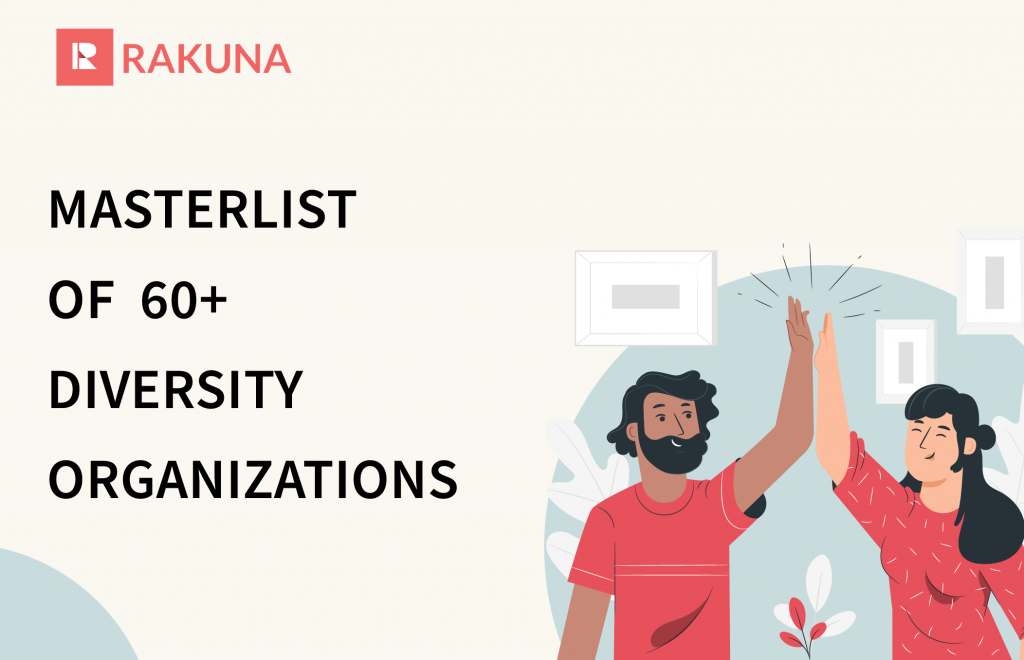
Establish Your Inclusion and Diversity Brand
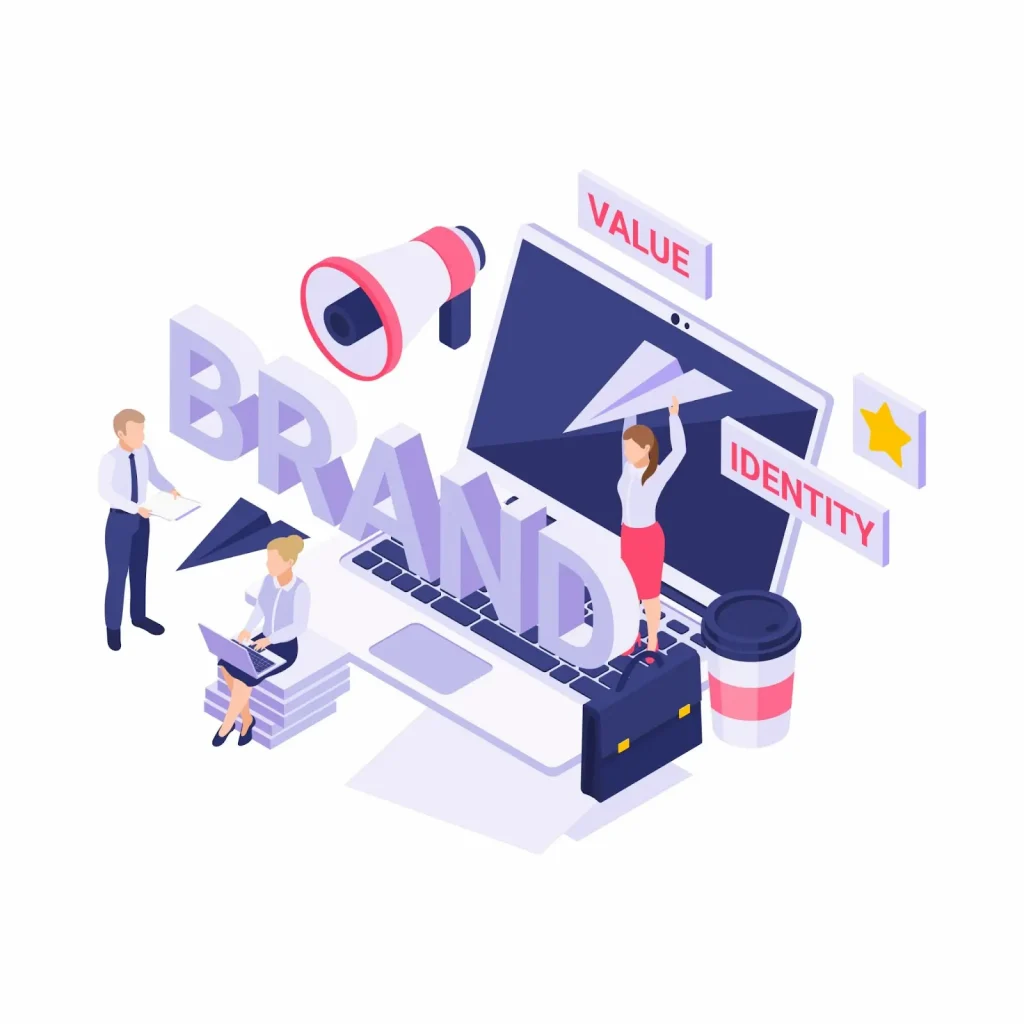
A diverse workforce and a strong employer brand go hand in hand. In 2025, job seekers are more selective than ever, and companies that fail to demonstrate genuine inclusivity risk losing top talent. Studies show that 76% of job seekers now consider diversity an essential factor when evaluating job offers (Glassdoor, 2024).
Your employer brand should actively showcase your commitment to inclusion across multiple touchpoints, from your website and recruitment materials to social media and hiring practices. Here’s how to strengthen your diversity brand and make it a key part of your recruitment strategy:
1. Optimize Your Company’s Career Page
Your career page is a prime opportunity to signal to candidates that your company prioritizes diversity. Ensure it includes:
✅ Clear Inclusion & Diversity Statement – A well-defined statement that reflects your company’s commitment.
✅ Diversity & Inclusion Charter – Outline guiding principles and policies for an inclusive workplace.
✅ Real Employee Stories & Testimonials – Feature employees from diverse backgrounds sharing their experiences.
✅ Demographic Transparency – Publish workforce diversity statistics to show progress.
✅ Awards & Recognition – Highlight D&I achievements, certifications, or partnerships.
2. Leverage Social Media for Employer Branding
Social media is a powerful tool for shaping how candidates perceive your company’s diversity efforts. Use it to:
✅ Showcase Employee Resource Group (ERG) Activities – Post about events and initiatives led by ERGs.
✅ Highlight Inclusion-Focused Campaigns – Share internal programs that foster belonging.
✅ Celebrate Milestones & Awards – Publicly acknowledge recognition for D&I leadership.
✅ Feature Employee Spotlights – Regularly introduce diverse employees and their career journeys.
3. Create Inclusive Job Descriptions & Hiring Practices
Diversity efforts should be reflected in how you recruit talent. Make your hiring process more inclusive by:
✅ Crafting Clear & Inclusive Job Descriptions – Avoid jargon and biased language that might deter underrepresented candidates.
✅ Utilizing Diverse Interview Panels – Ensure interview teams reflect different backgrounds and perspectives.
✅ Implementing Unbiased Screening Practices – Use AI-driven tools or structured interviews to minimize bias.
✅ Offering Accessible Application Processes – Ensure job applications are mobile-friendly and accommodate applicants with disabilities.
4. Improve Print & Digital Recruitment Materials
Your brochures, one-pagers, and recruitment event materials should reinforce your company’s commitment to diversity. Essential elements include:
✅ Diversity Vision & Statement – Consistently reflect inclusion values across materials.
✅ Authentic Visual Representation – Use real images of diverse employees instead of stock photos.
✅ ERG Information – Provide details about how ERGs support underrepresented groups.
✅ Upcoming Diversity-Focused Events – Promote career fairs and networking opportunities targeting diverse talent.
5. Build a Transparent Feedback & Accountability System
A strong employer brand isn’t just about marketing—it’s about authenticity and action. Companies that actively measure and improve their D&I efforts stand out. Consider:
✅ Regularly Publishing D&I Reports – Demonstrate transparency in tracking progress.
✅ Employee Feedback Mechanisms – Gather insights on workplace inclusion through anonymous surveys.
✅ Public Commitments & Benchmarks – Set measurable diversity hiring goals and report on achievements.
Enhance Your Employee Referral Program

A well-structured employee referral program can be one of the most effective ways to build a diverse workforce. Your employees already have expansive networks filled with talented individuals from different backgrounds. By leveraging these connections, your company can organically expand its candidate pool while strengthening its reputation as an inclusive employer.
To ensure your referral program actively supports diversity hiring, consider these best practices:
-
Incentivize Diversity Referrals: Offer bonuses or special recognition for employees who refer candidates from underrepresented groups.
-
Educate Employees on Diversity Goals: Clearly communicate why diversity is a priority and how referrals contribute to company-wide inclusion efforts.
-
Integrate Employee Resource Groups (ERGs): Encourage ERG members to participate in outreach and mentorship for referred candidates.
-
Track and Analyze Referral Data: Monitor the success of your referral program by analyzing diversity metrics in referral hiring.
Partnering with Student and Professional Groups
And don’t forget: A proactive way to diversify your talent pipeline is by building relationships with minority-focused student organizations and professional groups. These partnerships create direct access to qualified candidates from underrepresented backgrounds.
Use Social Media to Source and Market to Diverse Talent
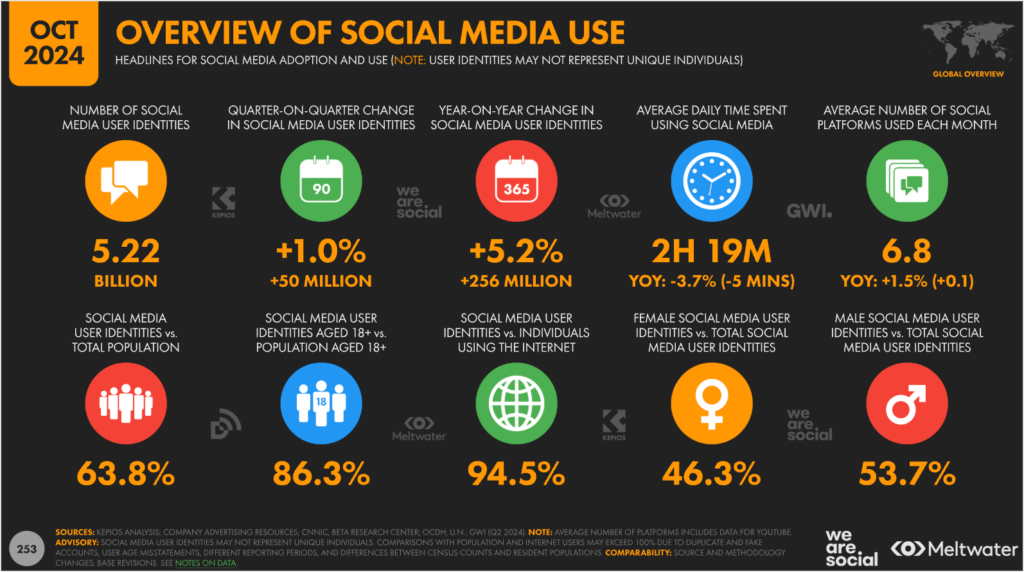
Social media isn’t just for brand awareness—it’s a powerhouse for diversity recruiting. The key is to move beyond just posting job openings and instead, actively engage with diverse communities in meaningful ways.
LinkedIn: The Go-To for Professional Networking
LinkedIn remains one of the best platforms for sourcing diverse talent. Recruiters can join and participate in professional groups focused on underrepresented communities, such as Women in Technology, Black Professionals Network, and LGBTQ+ in Business. By contributing valuable insights, sharing job opportunities, and engaging in discussions, recruiters can build credibility and establish long-term relationships with potential candidates.
Kaiser Permanente has successfully implemented this strategy by having its recruiters actively engage in LinkedIn groups for women, Latinos, and African Americans. Additionally, LinkedIn’s recruiting tools, such as diversity filters and bias-free search options, help hiring teams identify candidates from a wide range of backgrounds.
Facebook: Building Community Through Groups and Ads
Facebook offers a wealth of opportunities to connect with diverse candidates, particularly through its community-driven groups. Recruiters can become active members in groups like Women in STEM Careers, Veteran Job Seekers Network, and Disability-Friendly Workplaces to engage with job seekers directly. Creating a dedicated “Diversity Careers” Facebook Page is another effective strategy, allowing companies to regularly share success stories, ERG highlights, and job opportunities.
Targeted Facebook ads also provide an efficient way to reach specific demographics. By leveraging audience filters, recruiters can ensure their diversity hiring initiatives are seen by underrepresented candidates actively looking for opportunities.
Twitter (X): Real-Time Engagement and Hashtag Power
Twitter (X) is ideal for quick interactions and broad visibility. Recruiters can use diversity-focused hashtags like #DiversityInTech, #BlackTechTwitter, and #WomenWhoCode to reach specific communities. Engaging with diverse thought leaders by retweeting and commenting on their posts also helps build employer brand credibility.
Another effective approach is hosting Twitter Spaces on topics related to diversity hiring. These live discussions allow recruiters to connect with candidates in an informal, accessible way while showcasing their company’s commitment to inclusion.
Instagram and TikTok: Attracting Gen Z Through Visual Storytelling
For companies targeting younger talent, Instagram and TikTok offer creative ways to showcase workplace culture. Employee takeovers, behind-the-scenes office tours, and short-form recruitment videos featuring diverse teams help potential candidates see themselves in the company.
Accenture, for example, frequently uses Instagram Reels and Stories to highlight its diversity and inclusion efforts, making its brand feel more approachable to a broader audience. TikTok trends and challenges can also be leveraged to humanize the employer brand and increase engagement.
Reddit and Niche Forums: Underutilized But Effective
While platforms like LinkedIn and Instagram get the most attention, niche online communities offer untapped potential for diversity sourcing. Subreddits such as r/BlackEngineers, r/WomenInTech, and r/LGBTJobs allow recruiters to engage directly with specialized talent pools. Hosting AMA (Ask Me Anything) sessions or sponsoring industry-specific job boards can further enhance visibility and credibility.
YouTube: Long-Form Content for DEI Storytelling
YouTube provides an opportunity to go beyond quick social media posts and create deeper, more personal connections. Employee spotlights featuring diverse professionals, virtual recruiting events, and panel discussions on DEI initiatives are all powerful ways to communicate an inclusive company culture.
Salesforce has successfully used YouTube to showcase its Employee Resource Groups (ERGs) and highlight real employee experiences, reinforcing its employer brand as a champion of diversity and inclusion.
Support Inclusion and Diversity through Philanthropy
Another possible approach to inclusion and diversity recruitment businesses can take is through the support of philanthropic activities. A business can establish or be part of educational and community partnerships to enhance its diversity-focused image and access a more diverse pool of talent.
- For instance, Intel Corporation’s global investment organization, Intel Capital, introduced the Intel Capital Diversity Fund. This fund invests in technology startups led by women and individuals from underrepresented minorities.
- Monsanto collaborated with its philanthropic arm, the Monsanto Fund, to encourage Black, Latino, and women students to pursue STEM (Science, Technology, Engineering, and Mathematics) subjects. These initiatives proactively increased diversity within their talent pool and strengthened their brand in diverse communities.
Use the Right Metrics to Monitor Your Diversity Recruiting Efforts
What gets measured gets improved. Tracking diversity hiring efforts isn’t just about meeting quotas—it’s about ensuring your organization is making real progress toward an inclusive workforce. The key is to focus on the right metrics and use data-driven insights to refine your hiring strategies.
Core Diversity Recruiting Metrics
To evaluate your hiring pipeline and workforce diversity, start by measuring:
-
Diverse Candidate Representation: Track the percentage of diverse applicants at each stage of the hiring process, from sourcing to final offers.
-
Workforce Minority Representation: Assess the presence of underrepresented groups across different levels of the organization, particularly in leadership roles.
-
D&I Employee Satisfaction: Use pulse surveys and anonymous feedback tools to measure employee sentiment regarding diversity, equity, and inclusion (DEI) efforts.
-
Retention Rate for Minority Employees: Analyze whether underrepresented hires stay with the company at similar rates as other employees. High turnover may indicate deeper inclusion challenges.
-
Industry Recognition and Awards: Pay attention to external validation, such as diversity-related awards or certifications, to gauge how your efforts compare to industry standards.
Recruiter-Specific Diversity Metrics
Diversity hiring success isn’t just about overall company performance—it also depends on the effectiveness of individual recruiters. Dr. John Sullivan, a well-known HR strategist, suggests tracking:
-
Diverse Resume Submissions: What percentage of resumes presented to hiring managers come from underrepresented candidates?
-
Diverse Interview Rate: How often do diverse candidates make it to the interview stage? A low rate could indicate bias in the screening process.
-
Diverse Hiring Rate: What percentage of offers go to diverse candidates, and how does it compare to the initial applicant pool?
-
Turnover Rate of Diverse Hires: If new diverse hires are leaving quickly, it could signal an inclusion issue within your organization.
-
Applicant & Hiring Manager Satisfaction: Post-hire surveys can reveal whether diversity candidates feel welcomed and whether hiring managers are satisfied with the process.
-
On-the-Job Performance: Evaluating performance data after six months or a year can highlight whether diverse hires are set up for success.
As big data continues to transform the way we operate and analyze data, campus recruiting teams should strive to become more data-informed. By embracing the right campus recruiting software, recruiters can efficiently monitor these essential metrics and make more unbiased hiring decisions.
Effective use of campus recruiting software allows leaders to eliminate guesswork, develop evidence-based strategies, and showcase their team’s contributions to the organization. With a robust database of prospects collected from campus events, you can impress potential candidates with a streamlined interview process. Interview scheduling software is readily available to simplify and expedite every step of the process.
Develop Inclusive Company Policies to Attract Diverse Talent

Diversity recruiting isn’t just about sourcing candidates—it’s about making your company a place where diverse talent wants to work. Beyond inclusive hiring practices, companies can implement policies that demonstrate a genuine commitment to equity, inclusion, and employee well-being. Here are key policy areas that can help you attract and retain top talent from diverse backgrounds.
1. Inclusive Time-Off and Scheduling
Candidates from different backgrounds may have unique scheduling needs. Offering flexibility can help your company stand out.
-
Expanded Holiday Policies – Provide floating holidays that allow employees to observe religious or cultural celebrations outside of standard public holidays.
-
Flexible Work Hours – Offer alternative scheduling options such as remote work, four-day workweeks, or flex-time to accommodate different lifestyles and obligations.
-
Paid Volunteer Days – Encourage community engagement by offering employees paid time off to volunteer for causes they care about.
-
Extended Parental Leave – Go beyond minimum legal requirements by offering generous, gender-neutral parental leave policies that support all types of families.
2. Competitive and Equitable Compensation
Fair and transparent pay policies are a major draw for diverse candidates.
-
Pay Transparency – Publicly share salary ranges in job postings to demonstrate commitment to fair pay.
-
Equitable Pay Audits – Regularly assess pay equity within your organization and adjust salaries to eliminate disparities based on gender, race, or other factors.
-
Student Loan Assistance – Help ease financial burdens by offering loan repayment support, particularly for entry-level and early-career hires.
-
Childcare and Eldercare Support – Provide childcare stipends, backup care options, or eldercare benefits to assist employees balancing family responsibilities.
3. Benefits That Reflect a Diverse Workforce
Traditional benefits packages may not align with the needs of today’s workforce.
-
Mental Health & Wellness Support – Offer free counseling services, mental health days, and wellness stipends to support holistic well-being.
-
Relocation Assistance for Underrepresented Candidates – Provide financial and community support for diverse hires relocating to areas with limited cultural representation.
4. Career Development and Inclusive Advancement Opportunities
Diverse candidates want to see a future for themselves in your company. Invest in their growth.
-
Structured Mentorship Programs – Pair diverse hires with mentors who can help them navigate career advancement.
-
Leadership Development for Underrepresented Groups – Provide targeted training programs that prepare women, minorities, and marginalized groups for leadership roles.
-
Tuition Reimbursement & Upskilling – Offer financial support for continuing education, certifications, and professional development courses.
-
Clear Promotion Pathways – Make advancement criteria transparent and ensure fair access to leadership opportunities for all employees.
5. Fostering Open Communication & Employee Advocacy
Candidates are drawn to workplaces where their voices matter.
-
Diversity Councils & Employee Resource Groups (ERGs) – Create dedicated spaces for employees from different backgrounds to share experiences and influence company policies.
-
Anonymous Feedback & Whistleblower Protections – Implement anonymous reporting channels to ensure employees can safely voice concerns about bias or discrimination.
-
Inclusive Code of Conduct – Establish clear anti-discrimination policies and enforce accountability at all levels of the organization.
-
Public Commitment to DEI – Make your diversity commitments and progress public through annual reports and external partnerships.
6. Inclusive Hiring and Onboarding Practices
The candidate experience should reflect your company’s diversity values from day one.
-
Bias-Free Job Descriptions – Use inclusive language and avoid gendered, ableist, or culturally specific jargon in job postings.
-
Diverse Hiring Panels – Ensure interview panels include individuals from different backgrounds and perspectives.
-
Accessible Application Process – Make sure your application process accommodates candidates with disabilities, including screen-reader compatibility and video captioning.
-
Cultural Onboarding Programs – Offer onboarding sessions focused on inclusivity, company values, and diversity training to help new hires feel welcomed.
Enhance Diversity in Candidate Screening

Reevaluate Your Candidate Screening Criteria
Recruiters often rely on familiar selection criteria when evaluating candidates, but those criteria may unintentionally exclude diverse talent. It’s time to rethink what truly makes a candidate successful in your organization and ensure your hiring process is equitable.
1. Move Beyond Traditional “Culture Fit”
Many hiring managers unconsciously favor candidates who feel familiar—those who share similar backgrounds, experiences, or personalities. While cultural alignment matters, overemphasizing “culture fit” can lead to homogeneity and limit diversity.
-
Shift to “Culture Add” – Instead of asking, “Does this person fit in?” ask, “What unique perspectives can this person bring to our team?”
-
Encourage Diverse Interview Panels – A variety of perspectives in the interview process can help counter individual biases.
2. Reassess Degree and Experience Requirements
Many job postings require degrees or years of experience that may not be necessary for success in a role. These rigid qualifications can disproportionately exclude underrepresented candidates.
-
Prioritize Skills Over Pedigree – Instead of focusing solely on formal education or past job titles, assess practical skills through work samples, problem-solving exercises, or paid trial projects.
-
Consider Alternative Credentials – Recognize boot camps, online certifications, and community college programs as valid learning paths.
3. Standardize Interview Evaluations
Unstructured interviews often lead to bias-driven decisions. Implementing a structured, objective evaluation process ensures fairness.
-
Use Competency-Based Assessments – Develop standardized rubrics that focus on skills, knowledge, and problem-solving abilities rather than personal impressions.
-
Train Hiring Managers on Unconscious Bias – Equip interviewers with strategies to recognize and reduce bias in hiring decisions.
4. Expand Your Talent Pipeline
If you always recruit from the same sources, you’ll get the same types of candidates. Make an intentional effort to broaden your search.
-
Partner with HBCUs, Hispanic-Serving Institutions, and Women in STEM programs – Actively recruit from institutions that support diverse talent.
-
Use AI-Powered Resume Screening Tools – Implement software that helps minimize bias by focusing on candidate qualifications rather than demographic indicators.
5. Ensure Inclusive Job Descriptions
The language you use in job postings can attract—or deter—diverse candidates.
-
Remove Gendered and Coded Language – Words like “rockstar,” “aggressive,” or “dominant” can subtly discourage women or nonbinary candidates from applying.
-
Highlight Inclusive Benefits – Mention policies like paid parental leave, flexible work, and DEI initiatives to appeal to a broader talent pool.
6. Offer Second-Chance Hiring Opportunities
Traditional hiring practices often exclude candidates with non-linear career paths or those with past challenges.
-
Consider Fair Chance Hiring Practices – Provide opportunities for candidates with employment gaps, career changers, or individuals with prior convictions.
-
Provide Returnship Programs – Offer structured pathways for professionals returning to the workforce after a career break.
By reassessing your screening criteria, you open doors to a wider, more diverse talent pool—one that brings fresh perspectives, innovation, and stronger team performance.
Blind-Hiring Techniques
Unconscious bias can seep into hiring decisions, often without recruiters even realizing it. To combat this, many campus recruiters are adopting blind resume screening and blind interviews—strategies that strip away identifying details to ensure fairer candidate evaluations.
How Blind Resume Screening Works
Blind resume screening involves removing personal information from resumes that could trigger bias, such as:
-
Candidate names (which can hint at gender, ethnicity, or cultural background)
-
Educational institutions (to prevent favoritism toward certain universities)
-
Birthdates (to avoid age-related bias)
-
Specific locations (which can lead to regional bias)
This method forces recruiters to focus solely on qualifications, skills, and experience rather than external factors that may unconsciously influence their judgment.
Implementing Blind Interviews
Blind interviews take the concept further by anonymizing initial candidate interactions. Instead of traditional phone screenings, candidates can respond to text-based interview questions through an online platform—without revealing personal details.
Why this works:
✅ Reduces first-impression bias – Recruiters evaluate responses purely on content, not voice, accent, or perceived personality.
✅ Creates a level playing field – Candidates from underrepresented backgrounds get the same consideration as others.
✅ Enhances inclusivity – Helps organizations uncover hidden talent that may have been overlooked due to unconscious bias.
Limitations and Best Practices
While blind hiring techniques are powerful tools, they aren’t foolproof. Bias can still creep in during later interview rounds, so it’s important to train hiring teams on structured evaluation methods and diversity-conscious interviewing.
-
Combine blind resumes with competency-based assessments to ensure fair candidate evaluation.
-
Standardize interview scoring rubrics to minimize subjective judgment.
-
Educate hiring managers on unconscious bias so they remain aware throughout the process.
Blind hiring is an excellent step toward building a more equitable recruitment process. By focusing on skills and potential rather than background, recruiters can ensure a diverse, high-performing workforce that truly represents a variety of perspectives.
Address Recruiters’ Burnout
A gateway for unconscious bias to set in is a burned-out team of recruiters. Burnout is possible in any occupation. However, campus recruiters are even more susceptible to this phenomenon.
In the SHRM post titled “Many Recruiters Are on a Path to Burnout,” J.D. Wildflower, founder of Holistic Success Institute in Minneapolis, was quoted saying:
“Recruiters’ role of serving others at the expense of expressing themselves and the constant interactions with many other people are additional factors that can lead to emotional fatigue and burnout.”
J.D. Wildflower – Founder of Holistic Success Institute
Working in a highly competitive environment with repetitive work processes can take a toll on individuals, making them more susceptible to unconscious bias. So here are a few ways to support your recruiters:
- Implement Comprehensive Well-being Programs: Companies should invest in comprehensive well-being initiatives tailored to the unique needs of their recruitment teams. These programs could encompass stress management, mental health support, work-life balance, and strategies for building emotional resilience. By caring for their recruiters’ well-being, organizations can mitigate burnout and its associated biases.
- Promote Diverse Training and Education: Fostering awareness about unconscious bias through regular training and education is vital. Recruiters should be equipped with the knowledge and tools to identify and combat bias in their hiring processes. By promoting inclusion and diversity at the core of their practices, organizations can mitigate the impact of unconscious bias.
- Streamline Recruitment Processes: Simplifying and automating repetitive tasks and processes in recruitment can significantly reduce the burden on recruiters. Recruitment Software like Rakuna’s Campus & Event Recruiting Solution and Interview Scheduling Software allows them to focus on meaningful interactions and decision-making, reducing stress and minimizing the risk of unconscious bias.
- Encourage Collaborative Decision-Making: Establishing a collaborative decision-making framework involving multiple stakeholders in the hiring process can help temper individual biases. By diversifying the perspectives involved in recruitment, organizations can enhance objectivity and fairness.
Enhance Diversity in Shortlisting and Hiring

Leveraging ATS for Bias-Free Shortlisting
An Applicant Tracking System (ATS) isn’t just about streamlining recruitment—it’s a powerful tool for reducing bias and ensuring fair candidate evaluation. By automating the shortlisting process, recruiters can focus on skills and qualifications rather than subjective impressions.
How ATS Enhances Inclusion & Diversity
🔹 Objective Screening Criteria: ATS filters candidates based on job-relevant qualifications, eliminating human bias from the initial screening process.
🔹 Skill-Based Matching: AI-driven screening tools assess skills, experience, and certifications rather than personal details like name or location.
🔹 Consistent Evaluation: All candidates are reviewed using the same criteria, ensuring a level playing field.
🔹 Diversity-Focused Filters: Some ATS platforms allow recruiters to track diversity metrics and ensure a balanced shortlist.
Best Practices for Diversity-Driven ATS Shortlisting
✅ Customize Screening Criteria Thoughtfully – Ensure filters prioritize skills over rigid educational or experience requirements, which can unintentionally exclude diverse candidates.
✅ Use AI Ethically – Regularly audit ATS algorithms to prevent unintended bias in keyword-based filtering.
✅ Combine ATS with Blind Resume Screening – Removing personal identifiers before ATS screening can further reduce unconscious bias.
✅ Monitor Diversity Outcomes – If your ATS-generated shortlist lacks diversity, adjust job descriptions, sourcing strategies, or screening parameters.
Diversifying Talent Pipelines
Three research published in Harvard Business Review introduced readers to a startling discovery: If only a single individual of a minority group (i.e., a woman or a person of an ethnic minority) in the shortlist, their chance of getting hired is close to 0.
The hypothesis for this finding is that being a single person with a unique trait will highlight the differences of that individual. For decision-makers, choosing “the different” can be considered risky as human nature does not encourage deviation from the norm.
To address this bias, you can implement the “two in the pool effect,” a diversity recruitment strategy.
The concept behind this strategy is to intentionally include multiple qualified candidates from the same minority demographic in your shortlist. This approach levels the playing field, ensuring that the best person for the job is selected, regardless of their background.
Promote your ERGs Early
Don’t wait until the onboarding stage. A straightforward way for your talent acquisition team and hiring managers to promote inclusivity is by sharing information about your company’s Employee Resource Groups (ERGs) during the interview process. During interviews, encourage them to discuss the ERGs your company offers, and the number of employees involved, and share examples of past or upcoming ERG events.
It’s crucial for today’s job seekers to see that your company supports inclusivity. According to a Gartner report on Candidate Experience and Inclusion and Diversity, 70% of Latinx, Black, BIPOC, and Asian candidates admitted to ending their application process prematurely due to concerns about diversity and inclusion practices and management style.
Promoting ERGs during the interview process helps candidates feel an immediate sense of belonging and the opportunity to join a community right from the start.
To Conclude…
It is never too late to develop and optimize your Inclusion and Inclusion and Diversity Recruitment Strategy. In this guide, The Rakuna team has provided you with some of the most crucial best practices and approaches to build and improve your recruitment strategy to champion Diversity and Inclusion.
Already applying these 16 D&I Recruitment Approaches? See how Rakuna’s Total Recruiting Software Solution can streamline your recruitment processes. Book Your Free Demo Today

Team Rakuna
The Rakuna Team comprises a diverse group of professionals hailing from various corners of the world.
With a passion to enable organizations to hire their next waves of talents, we are dedicated to help organizations stay updated on important recruiting technology and industry best practices.

